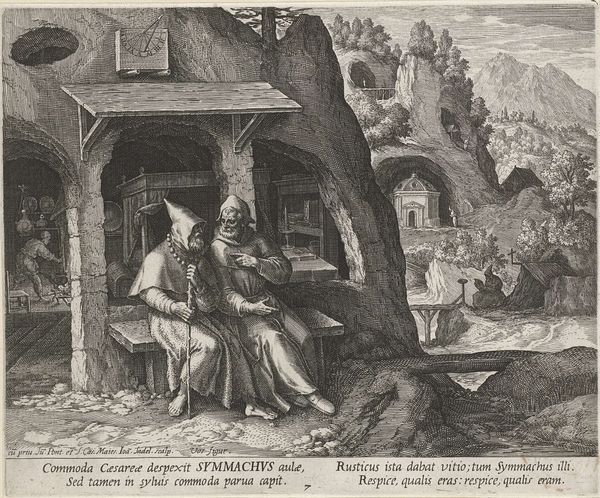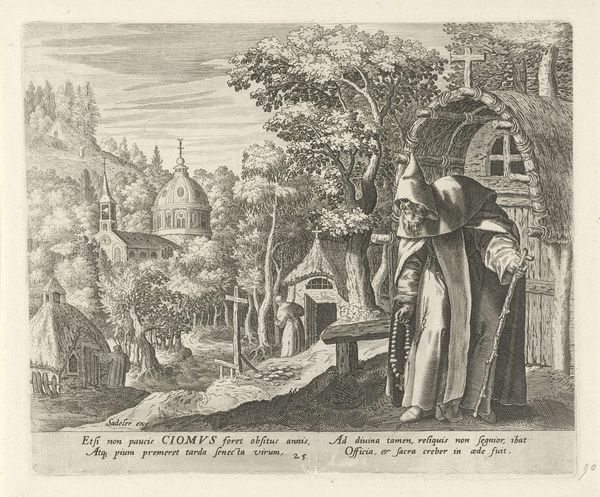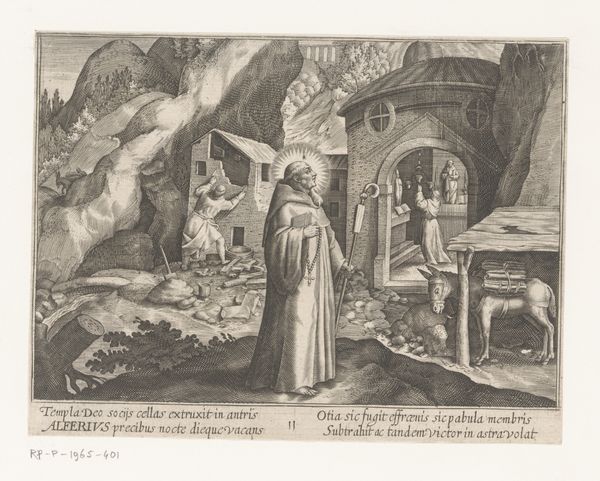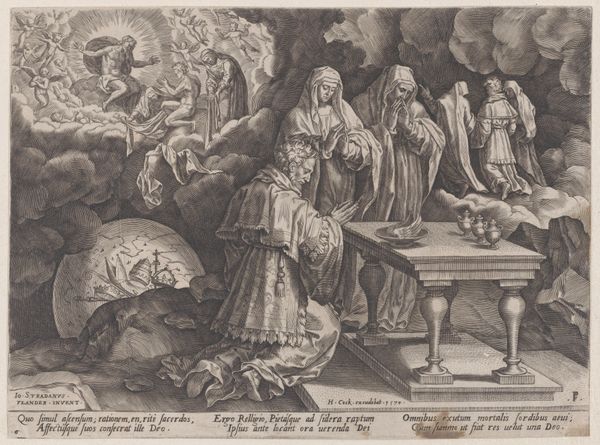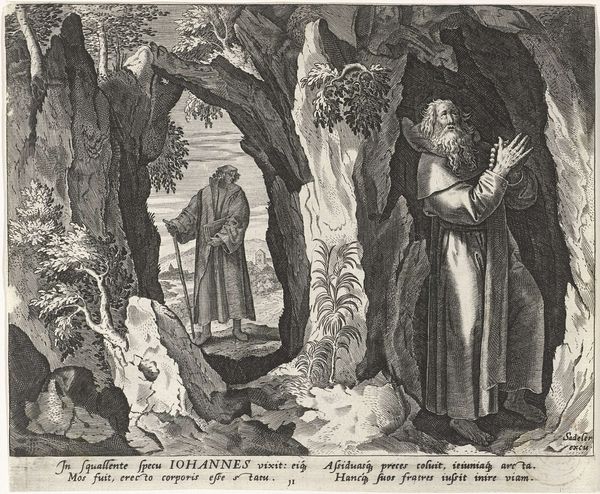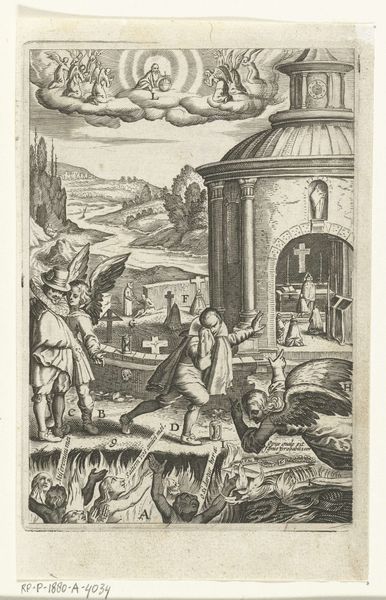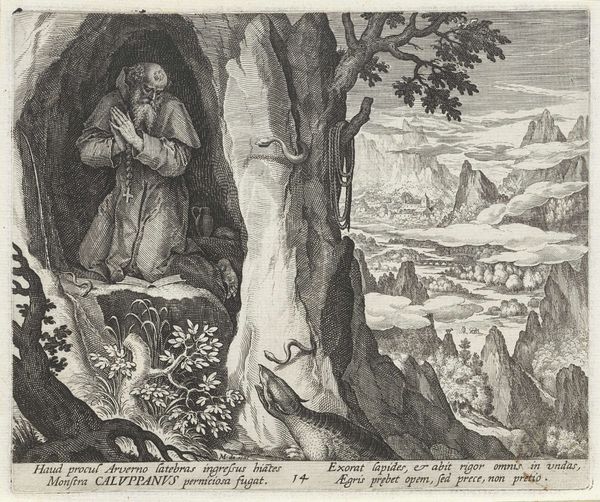
print, engraving
# print
#
old engraving style
#
landscape
#
mannerism
#
pen-ink sketch
#
mountain
#
engraving
Dimensions: width 205 mm, height 166 mm
Copyright: Rijks Museum: Open Domain
Editor: This engraving from 1598, “Heilige Alpherius als kluizenaar” by Johann Sadeler I, shows a mountainous landscape with what looks like monks at work and prayer. It's so detailed, but has this fantastical, almost dreamlike quality. What stands out to you most about it? Curator: What strikes me is how this print participates in a larger discourse of monastic reform during the late 16th century. We see Alpherius, framed both by established architecture and the raw, untamed wilderness. The implication is that Alpherius shapes and orders the landscape, bringing civilization to the wild. Note the Latin text at the bottom—it speaks to how Alpherius builds both physical structures *and* societal structures in service of God. Editor: So, you're saying it's not just about the saint himself, but about the power structures he represents? How monasteries at the time helped to solidify the control of the Church? Curator: Exactly. Mannerism, which we see stylistically, thrived under very specific types of patronage that gave rise to sophisticated, and at times overwrought and dramatic compositions that speak of power. How does the landscape contribute to the feeling of this image? Is nature a help or a hindrance to Alpherius’ holy life? Editor: Well, the landscape feels almost imposing. The mountains dwarf the figures. Perhaps it emphasizes the challenges and hardships Alpherius and his monks endured, highlighting their devotion. Curator: That contrast you identified between the natural and built environment underlines the church's ambitions to assert authority over the physical world, mirroring their spiritual authority. Did anything about this artwork shift how you now look at similar works from this era? Editor: Absolutely. I didn’t realize how political these idyllic religious scenes could be. It gives the composition another layer of depth, making it richer.
Comments
No comments
Be the first to comment and join the conversation on the ultimate creative platform.
